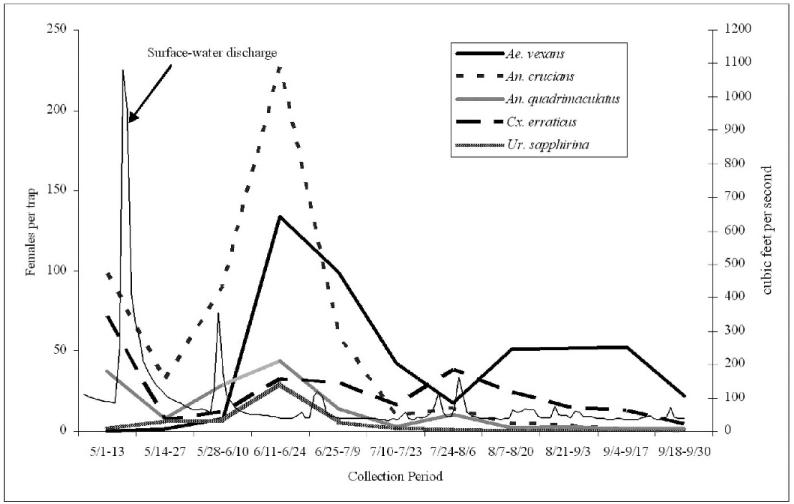Fig. 2.
Females of Ae. vexans, An. crucians, An. quadrimaculatus, Cx. erraticus, and Ur. sapphirina collected by carbon dioxide-baited CDC light traps during a 5-month period at a wetland in Tuskegee National Forest, Macon County, AL, 2006. Points represent mean females collected during 2-wk collection periods. Surface-water discharge data provided by US Geological Survey (2007) (USGS 02419000 Uphapee Creek near Tuskegee, AL).

